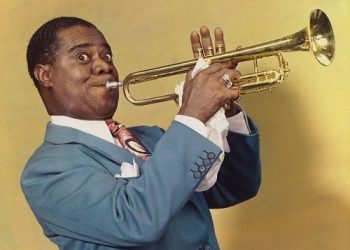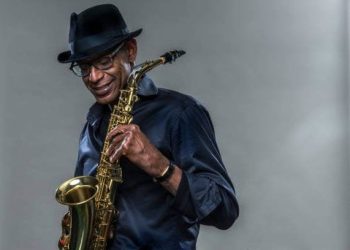Saxophone players are the vibrant heartbeat of jazz and beyond, their music blending soulful melodies with technical brilliance. From the bebop brilliance of Charlie Parker to the smooth tones of Stan Getz and the avant-garde innovations of John Coltrane, saxophonists shape the soundscape of modern music. Their ability to evoke emotion through intricate improvisation and lyrical expression captivates audiences worldwide, making them icons of creativity and versatility. Whether soaring through complex harmonies or weaving intricate melodies, saxophone players continue to push boundaries, inspiring new generations and leaving an indelible mark on the ever-evolving landscape of music.
1. Charlie Parker
Charlie Parker (1920-1955), also known as “Bird,” was an American jazz saxophonist and composer who is considered one of the most influential figures in the history of jazz. A pioneering force in the development of bebop, Parker’s virtuosic playing and innovative approach to harmony and rhythm revolutionized jazz in the 1940s.
Parker’s improvisational skills and technical prowess on the alto saxophone set new standards for jazz musicians. His rapid, complex melodies and sophisticated chord changes became hallmarks of the bebop style. Classics like “Ko-Ko,” “Ornithology,” and “Now’s the Time” showcase his extraordinary talent and creativity.
Despite his relatively short life, Parker’s impact on jazz was profound. His collaborations with other jazz legends, such as Dizzy Gillespie, Miles Davis, and Max Roach, produced groundbreaking recordings that continue to inspire musicians today.
Charlie Parker’s legacy extends beyond his musical innovations. He broke racial barriers in the music industry and helped elevate jazz to a high art form. His influence is still felt in contemporary jazz, and he remains a revered figure for his contributions to the evolution of the genre.
2. John Coltrane
John Coltrane (1926-1967) was an American jazz saxophonist and composer whose work had a profound impact on the development of jazz. Renowned for his technical prowess, innovative compositions, and spiritual depth, Coltrane is considered one of the greatest jazz musicians of all time.
Starting his career with big bands and as a sideman for artists like Miles Davis and Thelonious Monk, Coltrane quickly established himself as a force in the jazz world. His work with Davis, particularly on the seminal album *Kind of Blue*, showcased his evolving style and mastery of the tenor saxophone.
Coltrane’s own recordings, such as *Giant Steps*, *My Favorite Things*, and *A Love Supreme*, are landmarks in jazz. His pioneering use of modal jazz, complex harmonic structures, and intense improvisation pushed the boundaries of the genre. *A Love Supreme*, in particular, is celebrated not only for its musical brilliance but also for its spiritual and emotional depth, reflecting Coltrane’s search for a higher purpose through music.
Coltrane’s influence extends beyond jazz, inspiring musicians across various genres with his relentless pursuit of innovation and expression. His legacy is marked by a continuous quest for artistic and spiritual enlightenment, making him a revered figure in the history of music.
3. Sonny Rollins
Sonny Rollins, born in 1930, is an American jazz tenor saxophonist widely regarded as one of the most influential and innovative jazz musicians. Known for his robust tone, inventive improvisations, and rhythmic dexterity, Rollins has left an indelible mark on the jazz genre.
Starting his career in the late 1940s, Rollins quickly established himself as a formidable talent, playing with jazz legends such as Miles Davis, Thelonious Monk, and Max Roach. His album *Saxophone Colossus* (1956), featuring classics like “St. Thomas” and “Blue 7,” is considered a milestone in jazz history.
Rollins is renowned for his ability to reinvent himself and his music. Throughout his career, he has continuously explored new musical ideas and embraced various styles, from bebop to calypso. His penchant for practicing on the Williamsburg Bridge in New York City during a three-year hiatus from public performance (1959-1961) is legendary and exemplifies his dedication to honing his craft.
With a career spanning over seven decades, Sonny Rollins’ contributions to jazz are immense. His recordings and live performances continue to inspire musicians and jazz enthusiasts worldwide, cementing his status as a true jazz icon.
4. Lester Young
Lester Young, born in 1909 in Woodville, Mississippi, was a highly influential American jazz tenor saxophonist and occasional clarinetist. Nicknamed “Pres” or “Prez” by singer Billie Holiday, Young’s innovative playing style and distinctive sound significantly shaped the development of jazz and left an indelible mark on the genre.
Young rose to prominence in the 1930s as a member of the Count Basie Orchestra, where his light, smooth, and lyrical playing contrasted sharply with the more robust style of his contemporaries. His approach to the tenor saxophone, characterized by relaxed phrasing, a cool tone, and a focus on melody, was revolutionary and provided a new direction for jazz improvisation.
One of Young’s defining contributions was his ability to craft solos that were both melodic and rhythmically inventive. His solos often featured long, flowing lines and a subtle sense of swing, influencing countless musicians, including saxophonists such as Stan Getz, Zoot Sims, and John Coltrane. Young’s playing also had a profound impact on the development of the “cool jazz” movement in the 1950s.
Lester Young’s collaborations with Billie Holiday are particularly noteworthy. Their musical partnership produced some of the most memorable recordings in jazz history, including classics like “A Sailboat in the Moonlight” and “Mean to Me.” The deep musical connection between Young and Holiday was evident in their performances, with Young’s saxophone complementing Holiday’s voice beautifully.
Despite facing personal struggles and the challenges of racism, Young’s contributions to jazz remained unparalleled. He continued to perform and record throughout his career, leaving behind a rich legacy of recordings that are still celebrated today. Some of his notable albums include *The Lester Young Trio* and *Pres and Teddy*, which showcase his lyrical prowess and innovative style.
Lester Young’s legacy as a pioneering tenor saxophonist endures, with his influence evident in the playing of jazz musicians across generations. His unique approach to improvisation, his melodic sensibility, and his contributions to the evolution of jazz have cemented his place as one of the most important and beloved figures in the history of the genre.
5. Cannonball Adderley
Cannonball Adderley, born Julian Edwin Adderley in 1928 in Tampa, Florida, was a highly influential American jazz alto saxophonist. Renowned for his exuberant style, soulful playing, and virtuosic technique, Adderley became a prominent figure in the hard bop and soul jazz movements of the 1950s and 1960s.
Adderley first gained national attention when he moved to New York City in the mid-1950s. His big break came when he joined the Miles Davis Sextet in 1957, where his energetic and melodic playing complemented the group’s sound. Adderley’s contributions to seminal albums like *Milestones* and *Kind of Blue* helped solidify his reputation as one of the leading saxophonists of his time.
In 1959, Adderley formed his own quintet, which included his brother, trumpeter Nat Adderley. The Cannonball Adderley Quintet quickly gained popularity for its innovative blend of hard bop and soul jazz, producing hits such as “This Here” and “Work Song.” Their 1966 album *Mercy, Mercy, Mercy! Live at ‘The Club’* was particularly successful, with the title track becoming a crossover hit and exemplifying the soul jazz genre.
Adderley’s style was characterized by its warm, rich tone, expressive phrasing, and a robust sense of swing. His improvisations were marked by bluesy inflections, rhythmic inventiveness, and a deep emotional connection to the music. He was also known for his engaging stage presence and ability to connect with audiences, making his performances memorable and lively.
Throughout his career, Adderley collaborated with numerous jazz greats, including John Coltrane, Bill Evans, and Joe Zawinul. His work with Zawinul led to the composition of the classic “Mercy, Mercy, Mercy,” which became one of Adderley’s signature tunes.
Cannonball Adderley’s contributions to jazz extended beyond his performances and recordings. He was a passionate advocate for jazz education and worked to promote the genre through lectures and workshops. His influence can be heard in the playing of many contemporary jazz musicians, who continue to draw inspiration from his innovative approach and dynamic style.
Adderley’s legacy as a pioneering saxophonist and bandleader endures, with his recordings remaining essential listening for jazz enthusiasts. His vibrant, soulful playing and commitment to the evolution of jazz have cemented his place as one of the most important and beloved figures in the history of the genre.
6. Coleman Hawkins
Coleman Hawkins (1904-1969) was an American jazz tenor saxophonist who played a crucial role in establishing the saxophone as a primary instrument in jazz. Known as the “Father of the Tenor Saxophone,” Hawkins’ rich, full-bodied tone and inventive improvisational style helped shape the course of jazz during its formative years.
Hawkins gained prominence in the 1920s and 1930s, playing with Fletcher Henderson’s orchestra and leading groundbreaking recording sessions. His 1939 recording of “Body and Soul” is considered a masterpiece and a landmark in jazz history, showcasing his technical prowess and emotional depth.
Throughout his career, Hawkins’ influence extended beyond his playing style. He mentored and inspired numerous younger musicians, including saxophonists John Coltrane and Sonny Rollins. Hawkins’ legacy as a pioneer of jazz saxophone continues to resonate, and his contributions remain foundational to the evolution of jazz music.
7. Sidney Bechet
8. Dexter Gordon
Dexter Gordon (1923-1990) was an American jazz tenor saxophonist known for his big, warm tone, lyrical improvisation, and commanding stage presence. He emerged as one of the leading figures in bebop and hard bop during the 1940s and 1950s, contributing significantly to the evolution of jazz.
Gordon’s career included stints with major bands like those of Lionel Hampton and Billy Eckstine, but he gained widespread acclaim as a leader of his own groups. His recordings, such as *Go!* and *Our Man in Paris*, exemplify his sophisticated improvisational style and melodic creativity.
Beyond his musical contributions, Gordon’s stature grew internationally when he moved to Europe in the 1960s, where he found renewed success and appreciation. His return to the United States in the late 1970s brought a resurgence in his popularity, culminating in an Academy Award nomination for his role in the film *Round Midnight* (1986).
Dexter Gordon’s legacy as a jazz saxophonist is characterized by his distinctive sound, technical prowess, and his ability to blend bebop intricacy with a soulful, expressive approach. He remains revered for his contributions to jazz and for his influence on subsequent generations of musicians.
9. Ben Webster
Ben Webster, born in 1909 in Kansas City, Missouri, was a renowned American jazz tenor saxophonist celebrated for his rich, warm tone and emotive playing. Nicknamed “The Brute” for his powerful sound and “Frog” for his raspy, breathy tone, Webster was a pivotal figure in the swing era and beyond, leaving an indelible mark on the world of jazz.
Webster’s early career saw him playing with various territory bands in the Midwest, but his big break came when he joined the Duke Ellington Orchestra in the late 1930s. As a member of Ellington’s band, Webster became one of the leading tenor saxophonists of his time, contributing to some of the orchestra’s most iconic recordings, including “Cotton Tail” and “All Too Soon.” His collaboration with Ellington lasted until 1943, and his solos during this period are considered some of the finest in jazz history.
Webster’s playing was characterized by its lyrical beauty, expressive vibrato, and a distinctive ability to convey deep emotion through his instrument. He had a unique talent for playing ballads, where his soft, breathy tone could evoke profound feelings of melancholy and longing. At the same time, his robust and energetic approach to uptempo numbers showcased his technical prowess and swing.
After leaving Ellington’s orchestra, Webster continued to have a successful career, working as a soloist and with other prominent musicians, including Oscar Peterson, Coleman Hawkins, and Art Tatum. His collaborations with fellow tenor saxophonist Hawkins were particularly noteworthy, as the two contrasting styles complemented each other beautifully.
Webster spent the latter part of his career in Europe, where he found a welcoming and appreciative audience. He continued to perform and record extensively, producing several acclaimed albums, including *King of the Tenors* and *Ben Webster Meets Oscar Peterson*. His live performances in Europe further solidified his reputation as one of the leading tenor saxophonists of his generation.
Ben Webster’s legacy in jazz is defined by his exceptional tone, emotive playing, and ability to connect with audiences on a deeply emotional level. His contributions to the genre, both as a member of the Duke Ellington Orchestra and as a solo artist, have left an enduring impact on jazz music. Webster’s recordings remain essential listening for jazz enthusiasts, and his influence can be heard in the playing of many tenor saxophonists who followed in his footsteps.
10. Ornette Coleman
Ornette Coleman (1930-2015) was an American jazz saxophonist, violinist, trumpeter, and composer known for his pioneering contributions to free jazz and avant-garde music. Emerging in the late 1950s, Coleman challenged traditional jazz conventions with his innovative approach to improvisation, harmony, and form.
Coleman’s revolutionary album *The Shape of Jazz to Come* (1959) introduced his concept of “harmolodics,” which emphasized the equal importance of melody, harmony, and rhythm in improvisation. His quartet featuring Don Cherry, Charlie Haden, and Billy Higgins pushed boundaries with its free-flowing, collective improvisations.
Throughout his career, Coleman continued to explore new musical territories, collaborating with artists across genres and experimenting with different instrumentations. His compositions, such as “Lonely Woman” and “Peace,” are celebrated for their emotive power and unconventional structures.
Ornette Coleman’s impact on jazz and contemporary music is profound, inspiring generations of musicians to embrace freedom in expression and defy musical conventions. His legacy as a visionary artist who challenged and redefined the boundaries of jazz continues to resonate in the world of music and beyond.
11. Wayne Shorter
Wayne Shorter, born in 1933, is an American jazz saxophonist and composer celebrated for his profound influence on the evolution of jazz music. Known for his inventive improvisational style, complex compositions, and distinctive tone, Shorter’s career spans over six decades and includes collaborations with some of the most iconic figures in jazz.
Initially gaining recognition with Art Blakey’s Jazz Messengers in the late 1950s, Shorter later became a key member of the Miles Davis Quintet during its groundbreaking period in the 1960s. His compositions for Davis, such as “Footprints” and “Nefertiti,” showcased his innovative approach to harmony and form.
As a member of the pioneering jazz fusion group Weather Report in the 1970s and 1980s, Shorter continued to push musical boundaries, blending elements of jazz, rock, and world music. His compositions with Weather Report, including “Birdland” and “Black Market,” became jazz standards and exemplified his ability to fuse complex rhythms with melodic improvisation.
Wayne Shorter’s solo career has been equally distinguished, with albums like *Speak No Evil*, *JuJu*, and *Adam’s Apple* highlighting his compositional depth and mastery of the saxophone. His ability to seamlessly integrate tradition with innovation has earned him multiple Grammy Awards and widespread acclaim as one of the greatest living jazz artists.
Beyond his contributions as a performer and composer, Shorter’s visionary approach to jazz continues to inspire musicians across genres, solidifying his legacy as a trailblazer in the world of music and a true innovator in jazz history.
12. Gerry Mulligan
Gerry Mulligan, born in 1927 in Queens, New York, was an American jazz saxophonist, clarinetist, composer, and arranger. He is best known for his work on the baritone saxophone, where he established himself as one of the most influential players in jazz history. Mulligan’s contributions to the development of cool jazz and West Coast jazz are particularly significant, and his innovative approaches to arranging and ensemble performance have left a lasting legacy.
Mulligan’s early career saw him working as an arranger for big bands, including those led by Gene Krupa and Claude Thornhill. However, his big break came in the late 1940s when he began collaborating with trumpeter Miles Davis. Mulligan was a key contributor to the landmark 1949-50 recording sessions that produced *The Birth of the Cool*, an album that helped define the cool jazz movement with its emphasis on relaxed tempos, sophisticated harmonies, and intricate arrangements.
In the early 1950s, Mulligan moved to California, where he formed the Gerry Mulligan Quartet. This group was groundbreaking for its lack of a traditional chordal instrument, such as a piano or guitar, which allowed for greater harmonic freedom and interplay between the musicians. The original quartet featured trumpeter Chet Baker, and their recordings, including the hit “My Funny Valentine,” are considered classics of West Coast jazz.
Mulligan’s playing was characterized by its smooth, lyrical quality and his ability to craft melodic, flowing lines on the baritone saxophone, an instrument typically associated with a heavier, more cumbersome sound. His improvisational style was both inventive and accessible, making him a favorite among jazz audiences and critics alike.
Throughout his career, Mulligan continued to experiment and evolve, collaborating with a wide range of musicians, including pianists Thelonious Monk and Dave Brubeck, as well as bassist Charles Mingus. He also composed and arranged music for big bands and orchestras, further showcasing his versatility and creativity.
Mulligan’s contributions to jazz were recognized with numerous awards and honors, including a Grammy Award and induction into the Down Beat Jazz Hall of Fame. His work as a composer, arranger, and performer continues to influence jazz musicians and ensembles around the world.
Gerry Mulligan’s legacy is defined by his pioneering work on the baritone saxophone, his innovative approach to jazz arrangement and ensemble performance, and his contributions to the cool jazz and West Coast jazz movements. His recordings remain essential listening for jazz enthusiasts, and his influence endures in the world of jazz music.
13. Stan Getz
Stan Getz (1927-1991) was an American jazz saxophonist known for his lush tone, lyrical playing, and contributions to the popularization of bossa nova music. Emerging in the bebop era, Getz’s smooth yet technically brilliant style on the tenor saxophone earned him acclaim and a lasting influence in jazz.
Getz rose to prominence in the 1940s and 1950s, known for his collaborations with Woody Herman’s big band and his work with the “Four Brothers” saxophone section. His recordings with the “Jazz at the Philharmonic” series and his own quartet showcased his improvisational skill and melodic sensibility.
In the 1960s, Getz’s collaboration with Brazilian musicians, most notably on the album *Getz/Gilberto* featuring Antonio Carlos Jobim and João Gilberto, introduced bossa nova to a global audience. The album’s hit single “The Girl from Ipanema” became a worldwide sensation, solidifying Getz’s reputation as a leading interpreter of Brazilian music.
Throughout his career, Stan Getz maintained a distinctive voice in jazz, blending bebop sophistication with the warmth of his sound. His recordings, such as *Focus*, *Stan Getz and the Oscar Peterson Trio*, and *Captain Marvel*, continue to inspire musicians and jazz enthusiasts with their elegance and timeless appeal. Getz’s legacy as a versatile and influential saxophonist remains a cherished part of jazz history.
14. Michael Brecker
15. Sonny Stitt
Sonny Stitt (1924-1982) was an American jazz saxophonist known for his virtuosic playing and versatility on both the alto and tenor saxophones. Often compared to Charlie Parker for his bebop style and technical proficiency, Stitt developed a distinctive sound that combined bebop’s complex rhythms with a bluesy, soulful approach.
Stitt’s career spanned several decades, starting in the 1940s when he gained attention for his recordings and performances with notable jazz musicians of the time. His ability to effortlessly navigate intricate chord changes and his fluent improvisations made him a sought-after sideman and bandleader.
Throughout the 1950s and 1960s, Stitt recorded prolifically, releasing albums that showcased his impressive technique and creative improvisations. His recordings often featured him on both alto and tenor saxophones, highlighting his versatility and command of different jazz styles.
Sonny Stitt’s influence on jazz is notable for his technical mastery and his ability to blend bebop’s intricacies with a soulful, blues-influenced sound. His recordings, such as *Sonny Side Up* with Dizzy Gillespie and Sonny Rollins, remain cherished examples of his skill and musical legacy in the history of jazz.









